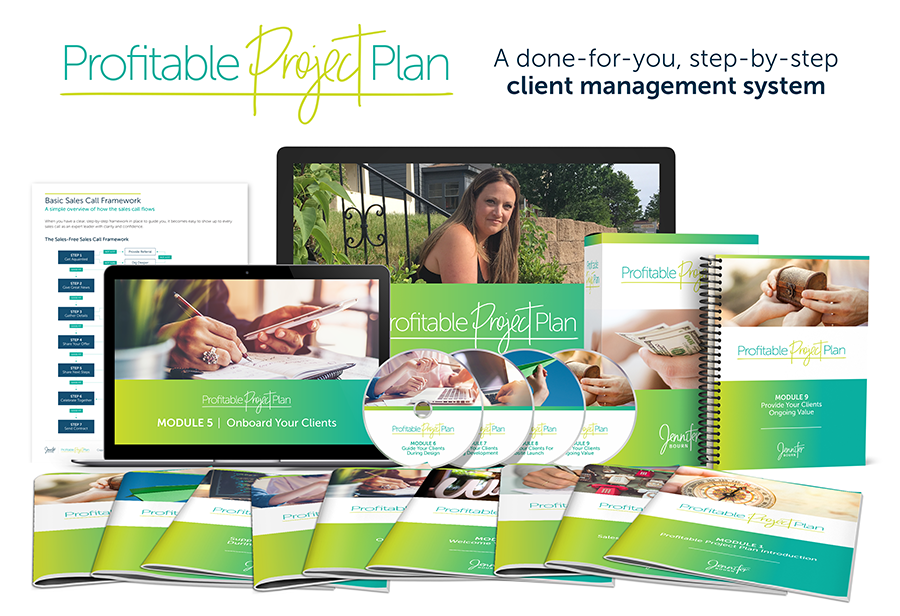Record Your Web Design Processes Today For a Faster, Easier Tomorrow
Business is all about consistency, and it’s your processes that drive consistency.
If you’re committed to creating a web design business that lasts long and grows strong – the first step to building a better design business is to record your processes.
Discover how recording your web design systems and processes today will help you save time, make more money, and build a better web design business tomorrow.
Key Takeaways
History repeats. The easiest way to resolve problems faster is to keep records of your systems and process and your problems and solutions.
A knowledge base documents FAQs, troubleshooting guides, and problem/solution combinations.
If the content is long – make it easy to scan read, with subheadings, short sentences, small paragraphs and bullet points. If you are in the middle of a mini-crisis when searching for a solution, you might be flustered and needing every bit of help to find that answer fast.
I personally use Zoho One and the included CRM’s “Solutions” feature.
Have you experienced this in your design agency?
You’re working on a new ecommerce website. The client needs this plugin to do that, and that plugin to do this. But then something else stops working.You can’t figure it out so you start troubleshooting, Googleing, reading through developer support forums and asking around in Facebook groups. In no time – hours have been lost.
BUT you finally get it resolved. Some plugin conflicted with that other one, and you had to find an alternative but eventually, it all works. And everyone’s happy.
12 months go by and you’re facing a similar situation. You vaguely recall having the same problem last year, but can’t remember exactly which plugins were conflicting and how you resolved it. And so you repeat the journey of wasted hours finding the solution. Again.
Had you recorded the problem, the cause and the solution in your own knowledge base system – the same problem second time around would have been much quicker and easier to resolve.
This happens. A lot. And the more websites you build. The more plugins you use. The more clients you get. The more responsibilities you have. The more jobs you are juggling. The more difficult it is to remember how you fixed things last time.
The easier and faster way to resolve pesky web design project problems
The above scenario is exactly why, step one on the pathway of peace and growth in your web design and development business is to keep a record! The easiest way to resolve problems faster is to keep records of:
- your systems and process and
- your problems and solutions
Recording your systems and processes is the beginning of your standard operating procedures.
Recording your problems and solutions is the development of your own internal knowledge base.
Both of which will become life savers for the future you. They will also help your business grow efficiently and effectively if and when others join your team.
Tips for Creating a Knowledge Base
The next time you come across a problem you’ve resolved once before but have forgotten or a “how to”, a “what to use for”, an “error message means” or any other type of issue, if it is something you have dealt with before (and recorded it) then you will find the answer. Fast. Trust me, 10 years will go by in no time and you will still be referring back to your knowledge base.
What information should you include in the knowledge base?
The knowledge base is documentation that outlines FAQs, troubleshooting guides, informational reminders and any problem/solution combinations. I include the following information with my knowledge base solutions:
- a description of the problem
- reference to the website, client it pertained to
- screenshot or text wording of errors presented
- an outline of the solution
- any URL links used to find the solution (sometimes the resolution “changes” and those URL references may have the updated solution)
- mention any specific platforms, themes, plugins involved in the problem or solution
If your content is long, then make it easy to scan read, by formatting it with subheadings, short sentences, small paragraphs and bullet points. If you are in the middle of a mini-crisis when searching for a solution, you might be in a fluster and will need every bit of help to find that answer. Use categories if the platform allows.
How to create a knowledge base?
- Word Documents (Microsoft or Google Docs)
- Zoho CRM (A solutions component for problem/solution documentation)
- Zoho Learn (A complete knowledge and learning management platform)
- WordPress knowledge base plugins
- Help Juice knowledge base software
- Stonly interactive knowledge base guides
- Hubspot for knowledge base
- Process Street for documenting team knowledge
Tips for Documenting Systems and Processes
Documenting the processes you follow in the every day tasks of your web design business, will help prepare you and your business for the day you hire a team or have interns work with you. Having your processes and systems documented in a format that can be handed over for others to read, watch or listen to will save you the time you would otherwise be spending with them one on one.
Why should you document your systems?
Recording the standard systems and processes you go through in your web design business will become a vital step within your business for the following reasons:
- Efficiency: Does your business struggle with staff turnover? This documentation will allow a smooth onboarding process for new hires by helping them understand various procedures in a simplified, well-explained, and consistent way. Performing tasks with guidelines to follow helps people accomplish more in a shorter time.
- Consistency: Everyone follows the same procedure so tasks are done correctly. No need to rack their brains trying to remember the next steps.
- Accountability: Documenting your process gives you insights about employees which can help in judging their performance objectively and fairly.
- Safety: Ensures employees perform their work in a consistent manner.
- Preserve: It chronicles the knowledge and skills you develop along the way and from older or previous employees. It can also serve as a factual basis for revising a process. When staff leave or go on holidays recording the how, what, why and when of how they performed their daily tasks makes it easier for their stand in.
Recording your systems and processes isn’t just about the staff. All of the above reasons also apply to how your business onboards new customers; how and when to follow up past clients; your marketing processes and more. Literally, every repeated activity in a business should be recorded.
Tools for recording your systems and processes
There is a range of platforms and software tools you can that make it super easy to document your processes and combine into a standardised system for others to follow (also commonly referred to as Standard Operating Procedures or SOPs).
- Trello.com – is a free project management tool. It can be used to document standard operating procedures by creating a new card per step and adding the details in the description. Checklists can be used for tasks and subheadings. Trello also allows users to attach files and comment on boards. This is convenient for monitoring progress in one area.
- Process.st – is a simple, free and powerfully effective tool to manage your recurring checklists and and procedures. It provides diagrams, videos, and companion files alongside your checklists. It also offers a library of workflows you can use as prompts. It’s a terrific tool for creating workflow documents in seconds.
- Loom.com – is a work communication tool that you can use for documenting processes by video. It captures on-screen activities and records a video/audio explanation simultaneously. The videos are easily shareable to anyone through a link.
- Vimeo.com – is a video hosting and sharing platform provider that also allows you to create screen recordings (perfect for explainer videos) or via your webcam, or both with the webcam overlaying your screen recording. This is my go to video screen recording and storage platform.
- Milanote – has a nice visual layout for organising ideas and projects. It uses “boards” and comes with ready-made layouts. This tool is especially appealing to creative professionals.
What information should you include when documenting your systems and policies?
This is all about systemising your processes and documenting them. It is taking note of the steps taken to perform a specific activity and recording it. It should be documented in such a way, that anyone can step in and follow the steps to produce the same outcome.
- Define the scope, intended audience, and consider their existing knowledge about the subject before you start
- Name the process and write a description to provide context
- Identify the starting point and end result
- Process and describe the activities.
- Organise everything in a logical sequence
- Visualise the process to make it easier for everyone to see how it works – illustrate visually by images, infographics, screenshots, voice recording or video.
- Review and test the process documented.
For best practice:
- Make it scan read friendly – use concise and readable words, bullet points, headings, and subheadings to break longer tasks
- Create a template/format that all documents follow for consistency
- Use checklists to ensure that steps are followed in an organised way
What processes should a web design business record?
Employee onboarding
It’s helpful to have documentation for new hires to have a common ground. An outline of the processes you follow could be helpful for new employees, subcontractors or VAs:
- Position descriptions and expectations
- Methods of communications used in office and between teams
- Passwords/access to important documents, drives etc
- Do’s and don’ts
- Weekly checklists or recurring work templates
Client onboarding
Your first interaction with every client is crucial, so having a process outlined can help you get and retain them:
- Templated messaging for standard emails or calls
- FAQs
- Common issues with clients or the projects and how to resolve them
- Next steps for new customers.
Project development
Recording the processes you follow in product development and projects is helpful as they will typically be tasks you repeat often. Having the steps documented make it easier for others to step in and complete the tasks for you. Some typical tasks for a web design business or digital marketing agency could be:
- ordering a domain and setting up a web hosting account for clients
- the process of installing WordPress, plugins and a theme
- the steps involved in configuring specific plugins such as Woocommerce, Yoast, cache or backup plugins
- the steps you take to size, optimise and save images for use in web projects
- the steps taken to set up a Mailchimp account for clients, create a template and import contacts
- the web design quoting process, how you work out your web design pricing and prepare the proposal
When should you start recording your processes?
Now! If you haven’t started recording your systems and processes, and developing a knowledge base yet, you should consider starting now. It’s tempting to start later in your business but the efficiency and consistency it returns are crucial. Don’t wait until you’re “established.”
Don’t make the mistake of thinking that recording your systems, processes and developing a knowledge base is for big business. As you will discover, having a record of these important knowledge sets in place will help you create a more efficient business and enable you to grow more effectively and affordably.




